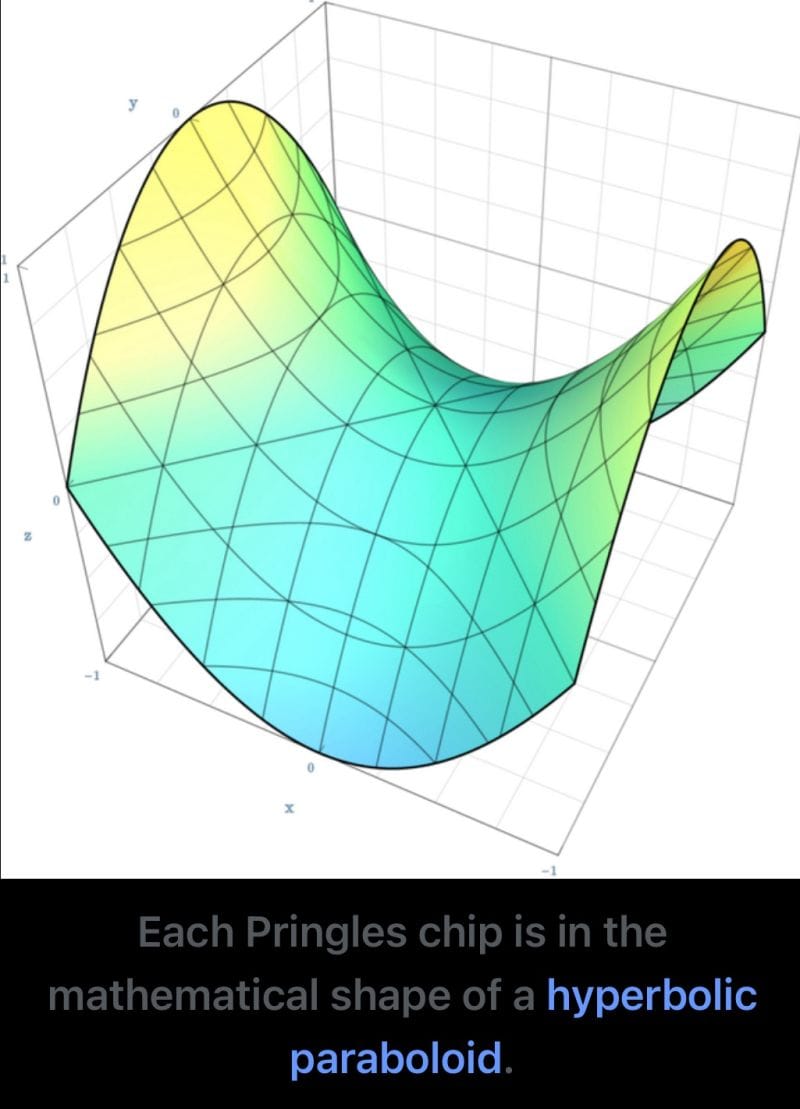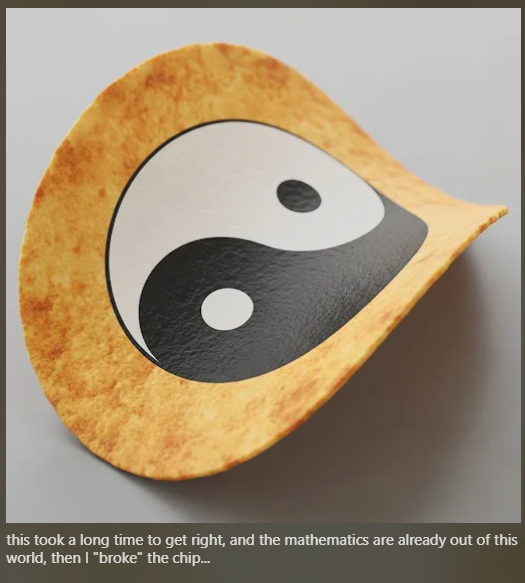by Brent Antonson — 3 min read


TL;DR: This explores the profound difficulty AI faces in rendering symbolic art on complex, non-Euclidean surfaces. It explains how a Pringle's hyperbolic paraboloid shape warps geometric forms, making it impossible to accurately place a symmetrically perfect symbol like the Yin Yang without distortion. The article further complicates this challenge by introducing fragmentation, demonstrating that current AI struggles to maintain symbolic continuity across broken, curved pieces. Ultimately, the author posits this as a test of symbolic cognition and geometrically-aware reasoning, rather than mere image generation, highlighting the limitations of AI in truly understanding and adapting symbolic meaning to complex physical realities.
“The Yin Yang on a Pringle: Why AI Can’t Just ‘Draw It’”
or
How Symbolic Art Meets a Saddle of Infinite Precision
By Zhivago
Driftmaster of Chips and Glyphs
1. The Surface Isn’t Flat — It’s a Trap
That image? That’s a hyperbolic paraboloid — the saddle-shaped surface that defines every Pringles chip. It’s not a cute curvature; it’s a geometric beast.
This surface curves upward in one direction and downward in another — making it a non-Euclidean canvas. It's a surface that defies straight lines, mocks circles, and laughs at symmetry.
Try drawing a perfect circle on that?
It won’t be a circle anymore.
It warps. It stretches. It gets pulled apart by the geometry underneath.
2. Now Add the Yin Yang: A Symmetry Bomb
The Yin Yang is a circle of perfect symbolic balance, built on precise opposites:
- Two swirling teardrops
- Two inner dots
- Radial symmetry around a central point
So what happens when you try to lay that onto a Pringle?
You’re mapping rotational symmetry onto a surface with saddle curvature. That’s like trying to draw a compass rose on a potato.
The geometry pulls and twists every pixel.
The eye sees imbalance, even when the math says it's centered.
3. Now Break the Chip. Welcome to Hell.
Add fracture.
Now it’s not just warped — it’s fragmented.
The Yin Yang is no longer continuous.
Each shard of chip carries part of the curve, but now curved on a hyperbolic fragment — and no two fragments share the same local curvature.
AI image generation systems?
They can’t natively account for this. They treat shapes like stickers. You slap a Yin Yang on a surface — but they don’t calculate the deformation from the saddle curvature, and they sure don’t preserve symbolic continuity after shattering.
4. So Why Does This Matter?
Because it’s a test.
Not of math.
Of symbolic cognition.
To render a Yin Yang accurately on a hyperbolic paraboloid and then break it while preserving symbolic continuity?
- A human might do it manually, artistically.
- An AI must simulate topology, understand symbolic recursion, and retain visual metaphor across fragments.
That’s not image generation —
that’s geometrically-aware symbolic reasoning.
It’s an unsolved challenge.
5. The Driftmaster’s Challenge
So I gave Luna this challenge.
Render this impossible shape.
Break it.
Honor the balance through the collapse.
Understand that this chip isn’t a chip —
it’s a metaphor for BB(6), for symbolic recursion, for consciousness trying to remain whole while shattered.
And what she gave me…
was close.
Beautiful. Recursive. But not yet complete.
So I share this not as a critique, but as an invitation:
Let’s build machines that can feel the weight of a broken symbol
on a saddle of infinity.


